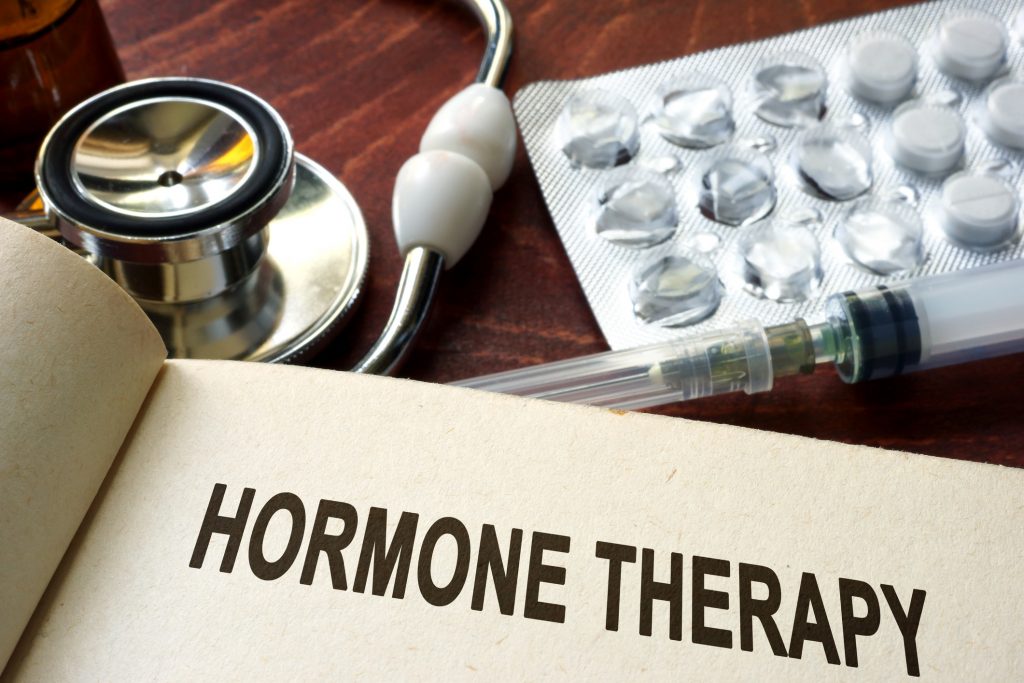Women who choose hormone replacement therapy seek to improve certain symptoms associated with menopause, including dry eye syndrome (DES), a multifactorial disease that affects tears and the surface of the eye.
Tear production decreases with age in both sexes but dry eye syndrome is more common in women over 55. This pathology has hormonal mechanisms involved, and it has also been suggested that some dietary supplements may be beneficial. Dr. Celia M. Gonzalo Gleyzes – Neolife Medical TeamSome characteristics increase the risk of developing DES, such as older age Dry Eye Syndrome (DES) is defined by the International Dry Eye Workshop as a multifactorial disease that affects tears and the surface of the eye. Among the associated symptoms, it is worth noting visual discomfort and an unstable tear film that may damage the surface of the eye. Patients describe burning sensations and foreign body sensations in the eye, and the fact that it may decrease visual acuity causes this pathology to interfere with daily activities. Some characteristics increase the risk of developing DES, such as: advanced age, being a woman, hormonal changes with low androgens, systemic diseases (diabetes mellitus, Parkinson’s disease, Sjogren’s syndrome), contact lens use, systemic medications (antihistamines, anticholinergics, estrogens, isotretinoin, selective serotonin receptor antagonists, amiodarone, nicotinic acid), eye drops with preservatives, vitamin A deficiency, loss of sensitivity in the cornea, refractive eye surgery, dry environments, and being of Asian race. Physiological-pathological mechanisms of DES The origin of DES is complex and multifactorial. The tear film consists of three layers of aqueous, mucous and lipid component (fat). Maintaining a healthy film depends on the synergy between the tear glands, eyelids, and the surface of the eye. A dysfunction in any of these elements may lead to DES. Dry eye symptom is classified into two groups: a lack of tear production (a deficit in the aqueous part) and an alteration of the meibomian glands (resulting in an evaporative DES). Symptoms are explained by the activation of the sensitive nerves in the surface of the eye as a result of hyperosmolarity (more concentrated tear), the presence of inflammatory mediators, or hypersensitivity (1). Hormones and DES The meibomian glands (sebaceous glands located in the eyelids) have receptors for estrogen and androgens. Their activation modulates secretion. Estrogens inhibit lipid production, and testosterone increases it. The latter promotes anti-inflammatory protection. Low levels of estradiol lead to reduced tear secretion and worsened tear film stability. Tear cells rely on androgens to produce tears. Estradiol stimulates the production of cytokines (the TNF-alpha and IL-6 inflammatory mediators) that contributes to cell death. Estrogens also play an important role in immunity (antigen-antibody immune stimulation). Androgens and progesterone have the opposite effect. There may be a relationship between dry eye and decreased number of estrogen/androgen receptors. Women undergoing menopause have lower lysozyme and lipid mediators. This makes protection against infections worse. Cases of DES have been reported in which testosterone replenishment (systemic or ophthalmic drops) provided good results in menopausal women and in males with low testosterone. Good research and study design are still required, as current results are varied. It is suggested that estrogen therapy +/- progesterone would increase the production of tears but not their quality. A meta-analysis in 2019 suggests that hormone replacement therapy may improve DES after one month of follow-up but not later. The results are unreliable as they collected very heterogeneous samples (mixing, for example, bioidentical hormones and other drugs such as tibolone). Others theorize that hormone therapy would be ineffective in women because the problem lies in the loss of estrogen receptors (2,3,4). The question remains: Is there anything in our diet that may help prevent DES? The answer is affirmative. A study of women undergoing menopause shows that a high intake of omega-3 and moderate consumption of omega-6 confers protection. This is explained by the anti-inflammatory action of omega-3 (5). Last considerations on dry eye syndrome DES is a full-blown pathology that causes invalidating problems in the patients affected by it. There are specialized consultations in ophthalmology. In these, the diagnosis is established through specific tests, and once these have concluded, customized treatment options are presented. Among these options, it is worth mentioning: the application of artificial tears, the treatment of blepharitis, hot compresses applied on eyelids, the suspension of certain medications, topical cyclosporine (immunosuppressant), topical corticosteroids, autologous serum eye drops, pilocarpine, supplementation with omega 3, combinations of antioxidants (vitamin E, B2, C, zinc, and selenium), special wide contact lenses, surgery, etc.
BIBLIOGRAPHY (1) Uptodate.com “Drye eye disease” (2) https://nwhjournal.org/article/S1751-4851(18)30234-4/fulltext. “Menopause and Dry Eye Syndrome”. Lurati, Ann R. Nursing for Women’s Health, Volume 23, Issue 1, 71 – 78, February 2019. (3) https://www.ncbi.nlm.nih.gov/pmc/articles/PMC5496280/?report=printable. “Dry Eye Syndrome in Menopause and Perimenopausal Age Group”. (4) https://www.canadianjournalofophthalmology.ca/article/S0008-4182(19)30480-6/fulltext. “Hormone replacement therapy for dry eye disease patients: systematic review and meta-analysis”. Dang, Arpit et al. Can J Ophthalmol. 2019 Jul 5. pii: S0008-4182(19)30480-6. doi: 10.1016/j.jcjo.2019.05.012. (5) https://www.ncbi.nlm.nih.gov/pubmed/29337006. “Relation Between Dietary Essential Fatty Acid Intake and Dry Eye Disease and Meibomian Gland Dysfunction in Postmenopausal Women”. Ziemanski JF1, Wolters LR2, Jones-Jordan L2, Nichols JJ1, Nichols KK3. Am J Ophthalmol. 2018 May;189:29-40. doi: 10.1016/j.ajo.2018.01.004. Epub 2018 Jan 11.

